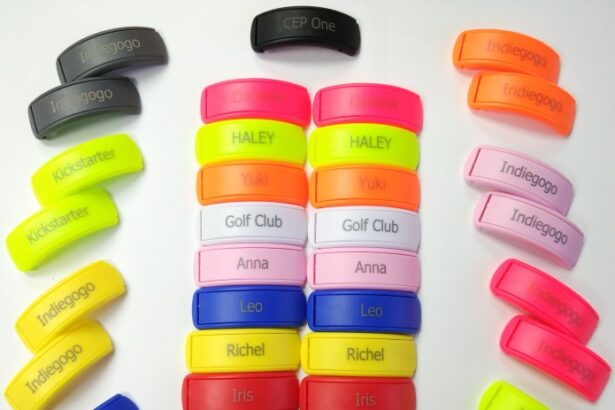TL;DR
- What’s new: The University of Wyoming’s RAM Lab (led by Daniel Rau) is decoding why soft resins warp and how to print elastomers cleanly and repeatably.
- How they’re doing it: Using photorheology and X-ray photon correlation spectroscopy (XPCS) at a synchrotron to watch soft photopolymers cure in real time.
- Why it matters: Tuned lattice midsoles for comfier running shoes, impact‑absorbing helmet liners, and soft medical wearables—with potential sustainability wins like dissolvable supports and recyclable TPU.
Quick Primer: Why “Soft” Is So Hard to Print
Most printers crush hard plastics. But soft, rubber‑like materials (elastomers) tend to slump, curl, or turn into blobs during resin printing. The culprit is a mix of low stiffness, tricky adhesion/release, and cure kinetics that don’t behave like rigid resins. The UW team’s aim is to map those dynamics so soft parts come out stable and functional, not wobbly.

Inside UWyo’s RAM Lab
Project goal: “Improve vat photopolymerization of soft elastomers by understanding process dynamics.” In plain English: build a “cookbook” of print recipes (exposure, peel, resin chemistry, post‑cure) so anyone can print soft parts reliably.
How they study it:
- Photorheology to track how a liquid resin gels under UV over time.
- XPCS at a synchrotron to watch microscopic motion during the liquid‑to‑solid transition and pinpoint where warping starts.
Why you should care: Better control = fewer failed prints and the freedom to design comfy, tuned lattices for shoes, safer sports gear, and patient‑specific medical devices that actually feel good on the body.
Footwear First: Softer Lattices, Smarter Comfort
- Lattice midsoles let brands tune cushioning, stability, and energy return by region (heel softness vs. forefoot spring).
- Production proof exists: 3D‑printed elastomer midsoles are already on feet in the wild—showing durability and comfort across thousands of steps.
- Custom orthotics, fast: New clinic workflows can scan feet and print flexible insoles in ~35 minutes, making same‑day personalization realistic.
- Full‑print shoes: One‑material TPU designs (no glue) simplify recycling; worn pairs can be ground down and reprinted.
What to prototype next
- Start with a gradient lattice midsole and define comfort targets (peak pressure, rebound, stability, durability cycles).
- Validate fit with small user panels; iterate lattice zones based on pressure maps.
- Plan for end‑of‑life with mono‑material designs and take‑back loops.
Beyond Shoes: Helmets, Wearables, and Medical
- Impact protection: 3D‑printed elastomer lattices in football helmets are tuned by player position to absorb energy where it matters most.
- Soft‑rigid hybrids: New light‑controlled printing methods can fuse soft and hard sections in a single print—ideal for braces, prosthetic liners, and stretchable electronics that need flexible zones plus rigid anchors.
- Microscale future: Nanoscale gel printing hints at tiny soft robots and biosensors—small today, but powerful for med‑devices tomorrow.
Sustainability Angle: Less Waste, More Circular
- Dissolvable/reusable supports mean faster post‑processing and less trash for intricate lattices.
- Mono‑material footwear (e.g., recyclable TPU) simplifies recycling and enables grind‑and‑reprint loops.
- Design for fewer parts: Printing soft‑rigid combos can eliminate adhesives and multi‑material assemblies.
What to Watch Next (Near‑Term)
- The Soft‑Print Cookbook: Parameter sets that travel well across printers and labs.
- Footwear‑grade elastomers: Tougher, sweat‑tolerant resins with stable rebound after high‑cycle testing.
- Single‑print components: Uppers with built‑in flex zones, insoles with printed arch bridges, and lace‑ready eyelets in one job.
- Cleaner print rooms: Dissolvable supports and smarter peel strategies reducing labor and failures.
FAQs
Low modulus means gravity and peel forces win; curing and release must be dialed precisely.
Yes. Region‑tuned lattices outperform uniform foams for cushioning, energy return, and stability—already proven in commercial footwear.
Top‑ranked helmets use position‑specific lattices to dissipate impact energy; testing data shows strong performance.
Dissolvable/reusable supports and mono‑material designs reduce waste and improve recyclability.
Sources
- University of Wyoming — “UW Engineering Professor Receives Grant for Novel Approaches to Soft 3D Printed Materials” (Aug 15, 2025): https://www.uwyo.edu/news/2025/08/uw-engineering-professor-receives-grant-for-novel-approaches-to-soft-3d-printed-materials.html
- 3D Printing Industry — “University of Wyoming Lab Pushes Boundaries of Soft Material 3D Printing” (Aug 19, 2025): https://3dprintingindustry.com/news/university-of-wyoming-lab-pushes-boundaries-of-soft-material-3d-printing-243214/
- 3D Printing Industry — “UT Austin Researchers Develop Light‑Controlled 3D Printing Technique for Mixed‑Material Objects” (Jul 2, 2025): https://3dprintingindustry.com/news/ut-austin-researchers-develop-light-controlled-3d-printing-technique-for-mixed-material-objects-241411/
- MIT News — “New 3D printing method enables complex designs and creates less waste” (Jun 3, 2025): https://news.mit.edu/2025/new-3d-printing-method-enables-complex-designs-creates-less-waste-0603
- VoxelMatters — “MIT eliminates 3D printing waste” (Jun 3, 2025): https://www.voxelmatters.com/mit-eliminates-3d-printing-waste/
- NIST — “NIST Scientists Get Soft on 3D Printing” (Sep 22, 2020): https://www.nist.gov/news-events/news/2020/09/nist-scientists-get-soft-3d-printing
- NIST publication — “Electron and x‑ray focused beam‑induced cross‑linking in liquids…” (ACS Nano, 2020): https://www.nist.gov/publications/electron-and-x-ray-focused-beam-induced-cross-linking-liquids-toward-rapid-continuous
- 3D Printing Industry — “VICIS and Carbon Develop NFL’s Top‑Ranked 3D Printed Helmet for Quarterbacks” (May 12, 2025): https://3dprintingindustry.com/news/vicis-and-carbon-launch-nfls-top-ranked-3d-printed-helmet-239376/
- Carbon — Helmets overview: https://www.carbon3d.com/industries/consumer/helmets
- Carbon — adidas case studies (EPU‑based 4D midsoles): https://www.carbon3d.com/resources/case-study/adidas ; https://www.carbon3d.com/resources/case-study/introducing-adidas-4dfwd-the-worlds-first-3d-printed-anisotropic-lattice-midsole-designed-to-move-you-forward ; https://www.carbon3d.com/materials/epu-44
- Sculpteo — “Carbon & adidas: Mass‑Production with 3D Printing” (2017): https://www.sculpteo.com/blog/2017/04/12/carbon-and-adidas-partnering-to-create-a-new-partly-3d-printed-shoe/
- 3D Printing Industry — “Clinics can now produce 3D printed insoles in 35 minutes with PioCreat’s system” (Aug 11, 2025): https://3dprintingindustry.com/news/clinics-can-now-produce-3d-printed-insoles-in-35-minutes-with-piocreats-system-242958/
- PioCreat — Insole customization overview: https://www.piocreat3d.com/application-insole-customization/ ; PDF spec sheet: https://www.piocreat3d.com/wp-content/uploads/2024/09/3D-Printing-for-Medical.pdf
- Zellerfeld — FAQ and product pages (zellerFOAM® recyclable TPU): https://www.zellerfeld.com/pages/faq ; example product page: https://www.zellerfeld.com/products/beluga




